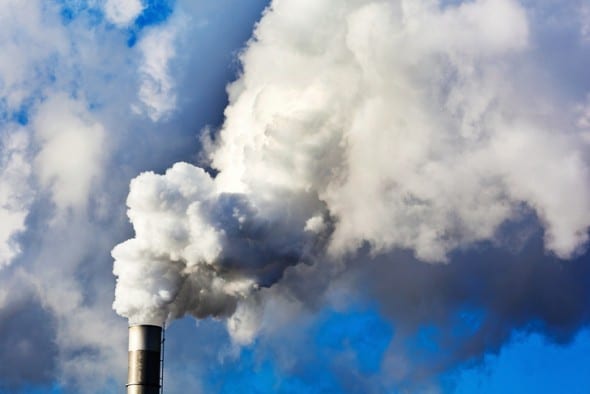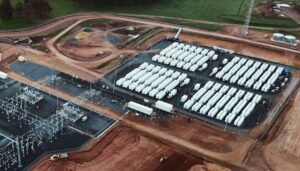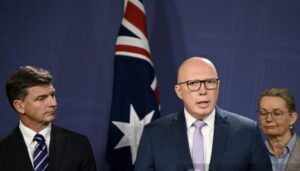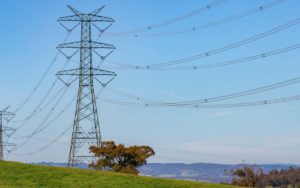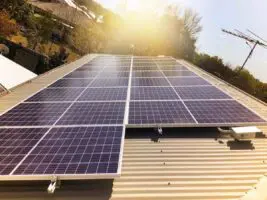The Australian government will hold the second of its Emission Reduction Fund auctions this week, with up to $1 billion or more expected to be sold to a range of projects from coal mine waste gas activities to forest regeneration and savannah burning.
Analysts expect the increased competition for government handouts to the projects may see the average price fall from $13.45 in the first auction. No doubt this will be a source of some pride for the government and its environment minister Greg Hunt.
But how long can the government of Malcolm Turnbull maintain the charade over its Direct Action plans?
Industry analysts Reputex, a division of rating agency Standard and Poor’s, says the auction may well buy a significant amount of “abatement”, but it will not change the fact that Australia’s emissions growth will continue to outpace contracted payments, particularly in the 2020-2030 period.
“While the ERF has been successful in contracting abatement, the inability of the entire policy (including safeguards) to curb emissions growth remains of concern,” Reputex says in its latest report.
“We continue to project a net increase in national emissions through to 2020 and 2030, accounting for the ERF.
“This indicates that the rate of Australian emissions growth is significantly outpacing abatement contracted. Subsequently, if the success of the Direct Action Plan is equal to the sum of its parts, the government has work to do to return Australia to a downward emissions trend.”
The Coalition says it is convinced that it will meet both its 2020 targets – for a 5 per cent cut below 2000 levels – and its 2030 targets (currently at 26-28 per cent below 2005 levels, or 19 per cent below 2000 levels).
This is partly due to the abatement bought by the ERF, although some of it won’t be delivered until after 2020, and the “additionality” of much of its abatement is also under question.
But it is also due to forecasts of lower than expected exports of coal and LNG, and a greater excess of Kyoto credits – the surplus credits Australia accrued when it beat its target of only lifting emissions by 8 per cent in the years to 2012.
There have been reports from specialty publications in Europe, notably Carbon Pulse, that Australia may have been active buyers of Kyoto carbon credits that have barely had a market in recent years.
There is speculation that Australia may have been accruing credits – up to 40 million at prices of between 18c and 23c each – to meet that Kyoto target, thereby delivering a bigger surplus that could be used to meet its 2020 target.
If true, this would be yet another extension of the mystifying rules around carbon accounting, that have variously been exploited by numerous countries under the UN’s Kyoto protocol, and which have been a major stumbling block in international climate talks.
Turnbull has defended the policies he once ridiculed before he found himself prime minister, and making a promise to the conservative forces within his party not to dismantle the Direct Action policy.
He insists, now, that “it does not matter where the abatement” comes from. The problem for Australia comes from the fact that, apart from questions about the legitimacy of such purchased “abatement”, such measures do not send the economy-wide signal to actually decarbonise.
This is reflected in data which shows that, since the repeal of the carbon price, Australia’s coal-fired generation has jumped sharply. And despite the agreement for a reduced target for large-scale renewables, there appears little in the way of new large-scale development that could help force out more ageing coal generators.
Hence the fear that while such auctions may buy significant amounts of abatement, this will be overwhelmed by increasing emissions elsewhere, particularly with the so-called “safeguards mechanism” not imposing any real restrictions, and not likely to be amended until 2017 at the earliest.
Bidding for the second ERF auction will open on Wednesday and will continue into Thursday. Reputex says 277 projects have been registered since the first auction in July, taking the total to 384 projects. A total of 93 per cent of all projects are registered to land-use and waste proponents.
Industry accounts for just 7 per cent of projects, but because these are big projects, they could account for a large volume of credits, particularly from coal mine waste gas and industrial energy efficiency projects.
Reputex estimates that the ERF will deliver around 120 million tonnes of abatement prior to 2020. While more abatement will be contracted, this will be supplied after 2020.
“This is less than the government’s official abatement task, which states that 236 million tonnes of emissions reductions is required to meet Australia’s 2020 target. Despite the shortfall to Australia’s 5 per cent target, we continue to estimate that Australia’s official abatement task is overstated, and does not account for lower coal and LNG export growth.
“A downward revision of activity is anticipated to lead to an improvement in Australia’s emissions outlook, with analysis indicating that up to 200 million tonnes may potentially be removed from Australia’s 2020 abatement task over the next five years.
“Should official figures be downgraded (expected in November) and the government utilises its Kyoto accounting benefit, we continue to project that Australia’s 2020 target will come into reach, albeit due to factors outside of policy control.”
In other words, the Coalition government has been lucky.
However, its use of rarely traded Kyoto credits, the questions over its Direct Action policy, and its continued refusal to re-instate the carbon price it repealed two years ago, will put the government under intense scrutiny in the coming weeks leading into the Paris climate talks.
Australia’s emissions reduction targets are seen as being at the “bottom end” of offers from both developed and developing countries, and there are questions on whether it has the policies to event meet these modest targets.
The World Bank, the International Monetary Fund, and the OECD, along with the heads of Germany, France, Mexico and Chile have called for a carbon price to be included as part of the Paris agreement, but this has been rejected.
Still, carbon pricing will impact 40 per cent of world emissions once China imposes its own national trading scheme in 2017.
What may come into focus in Paris is the development of new coal mines. South Pacific nations have increased their call on Australia to stop developing new coal mines.
“We in the Pacific are innocent bystanders in the greatest act of folly of any age,” Fijian prime minister Frank Bainimarama said last week, the Guardian reported.
“The industrialised nations are putting the welfare of the entire planet at risk so that their economic growth is assured and their citizens can continue to enjoy lives of comparative ease. All at the expense of those of us in low-lying areas of the Pacific and the rest of the world.”
But neither the Australian Coalition government, nor the Labor opposition, have shown any interest in slowing down the development of new coal projects, claiming there is a “moral” imperative in using coal to deliver electricity to the poor. This has been dismissed as nonsense in numerous quarters.

